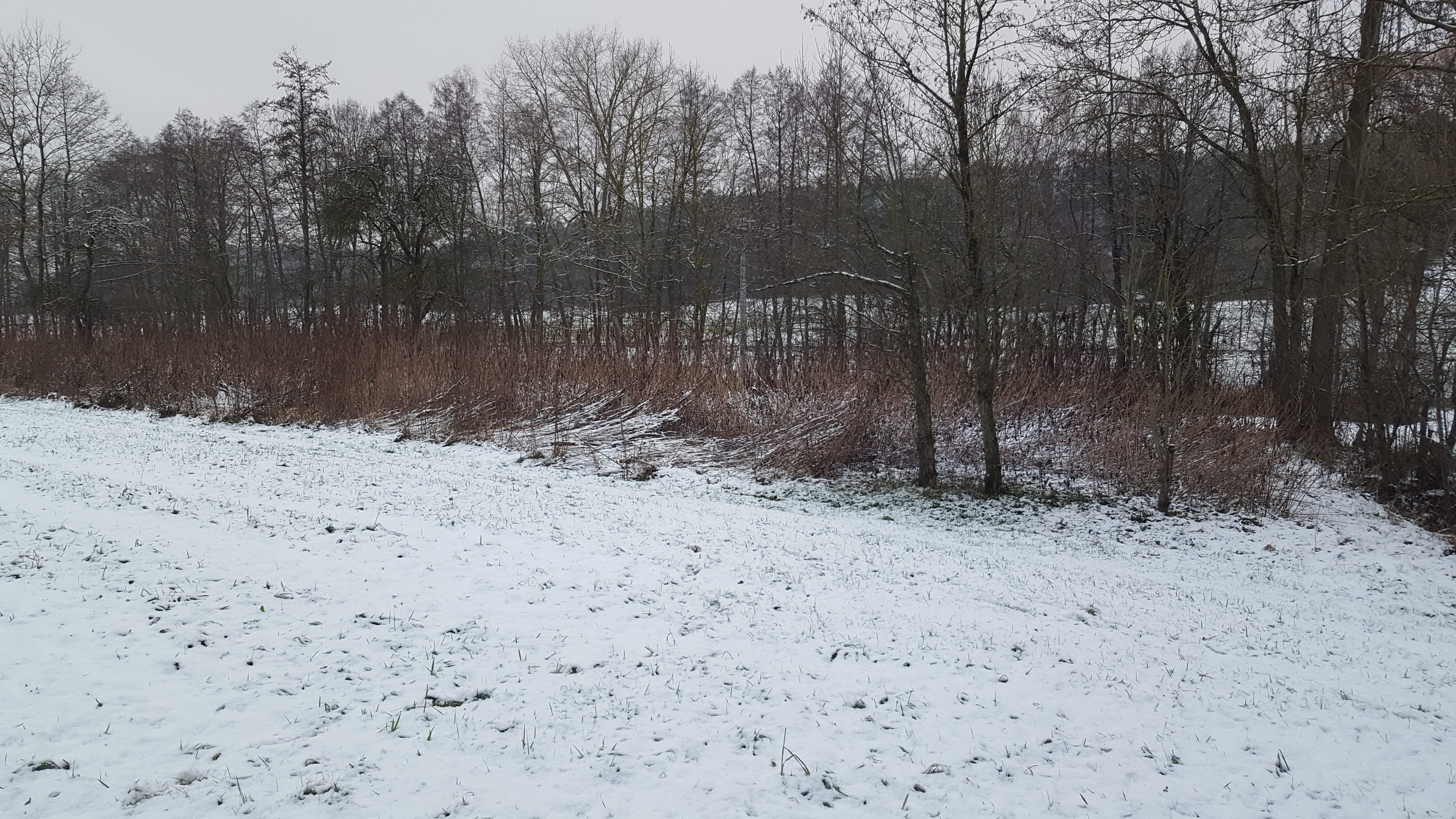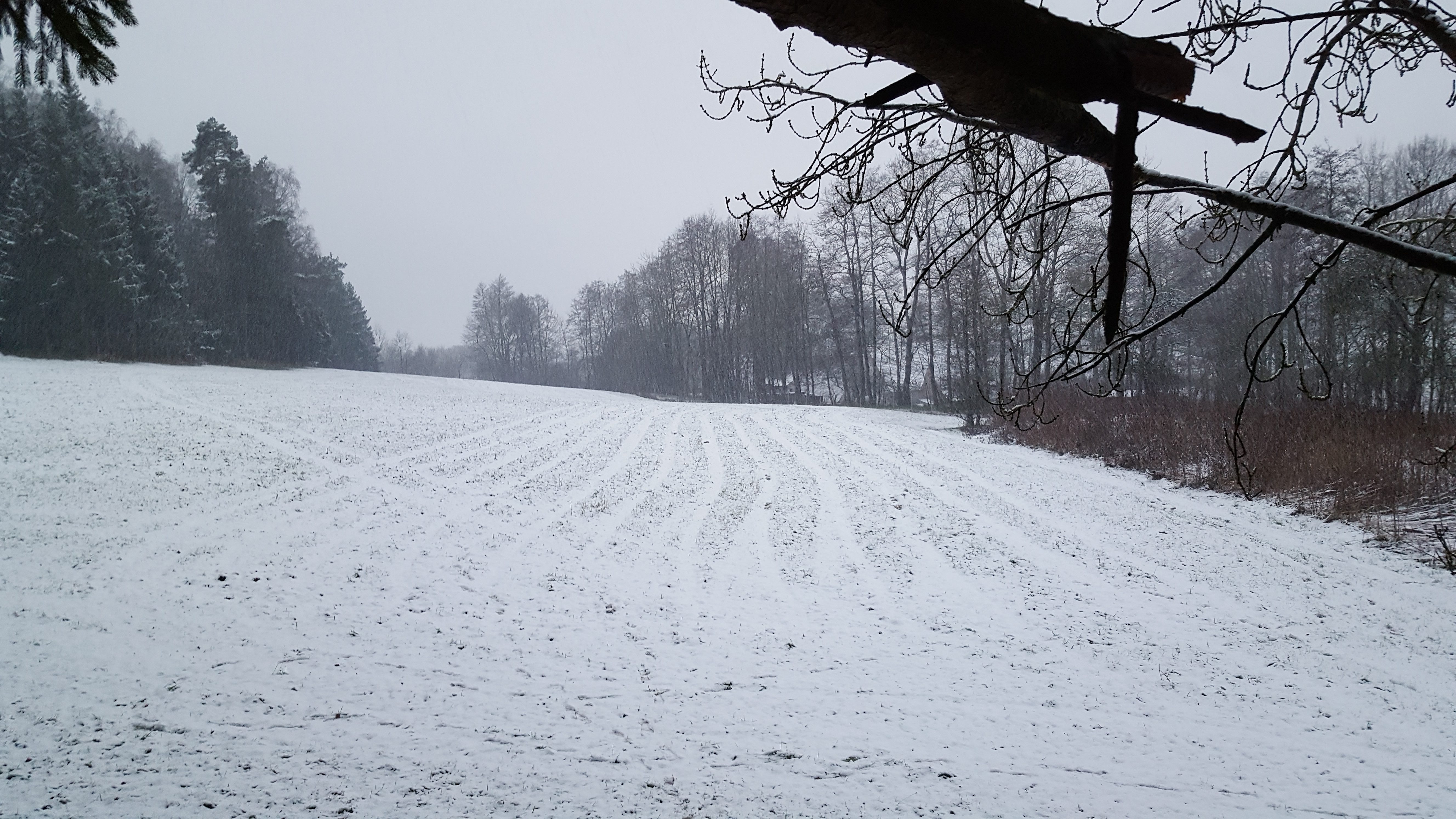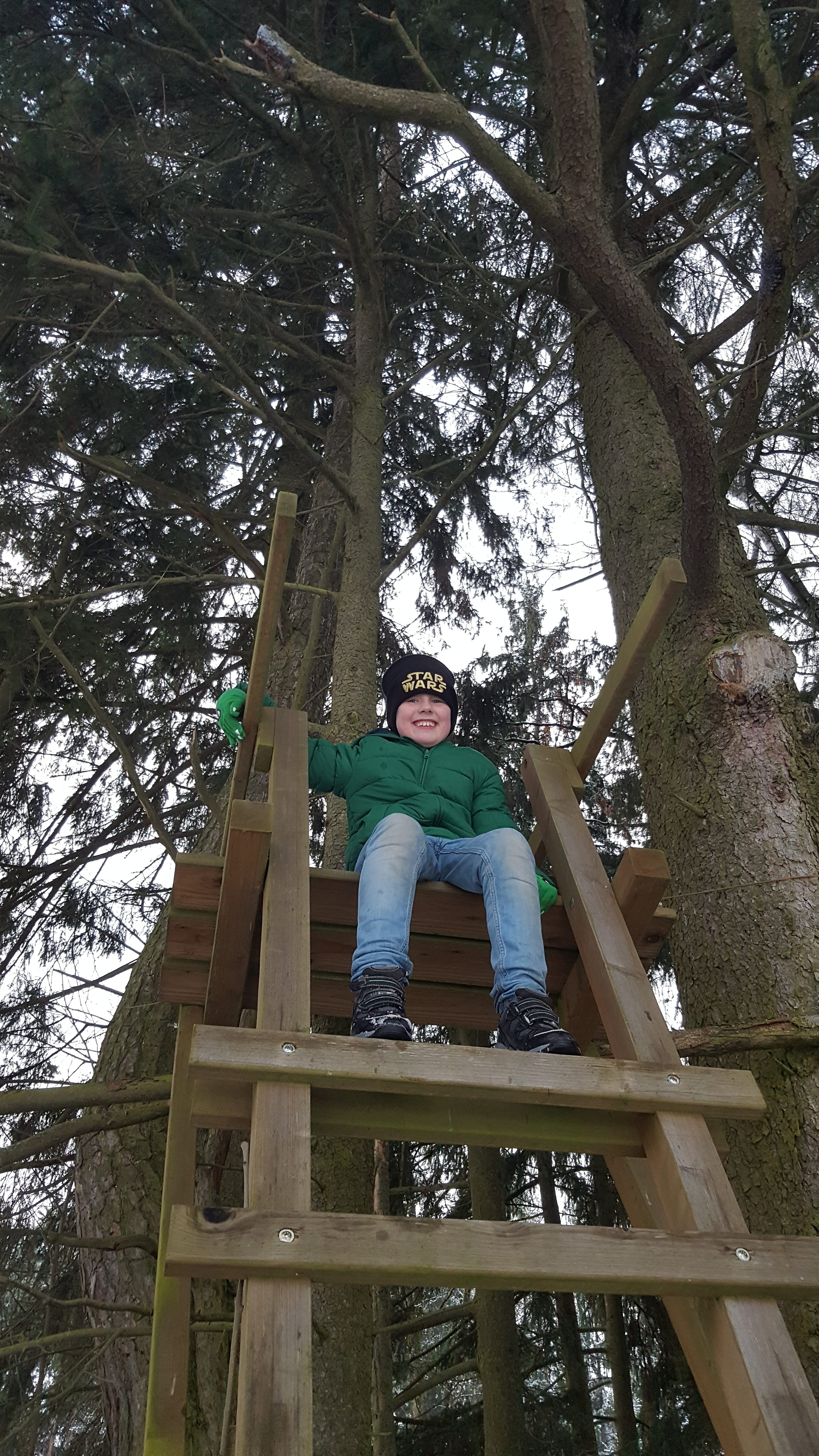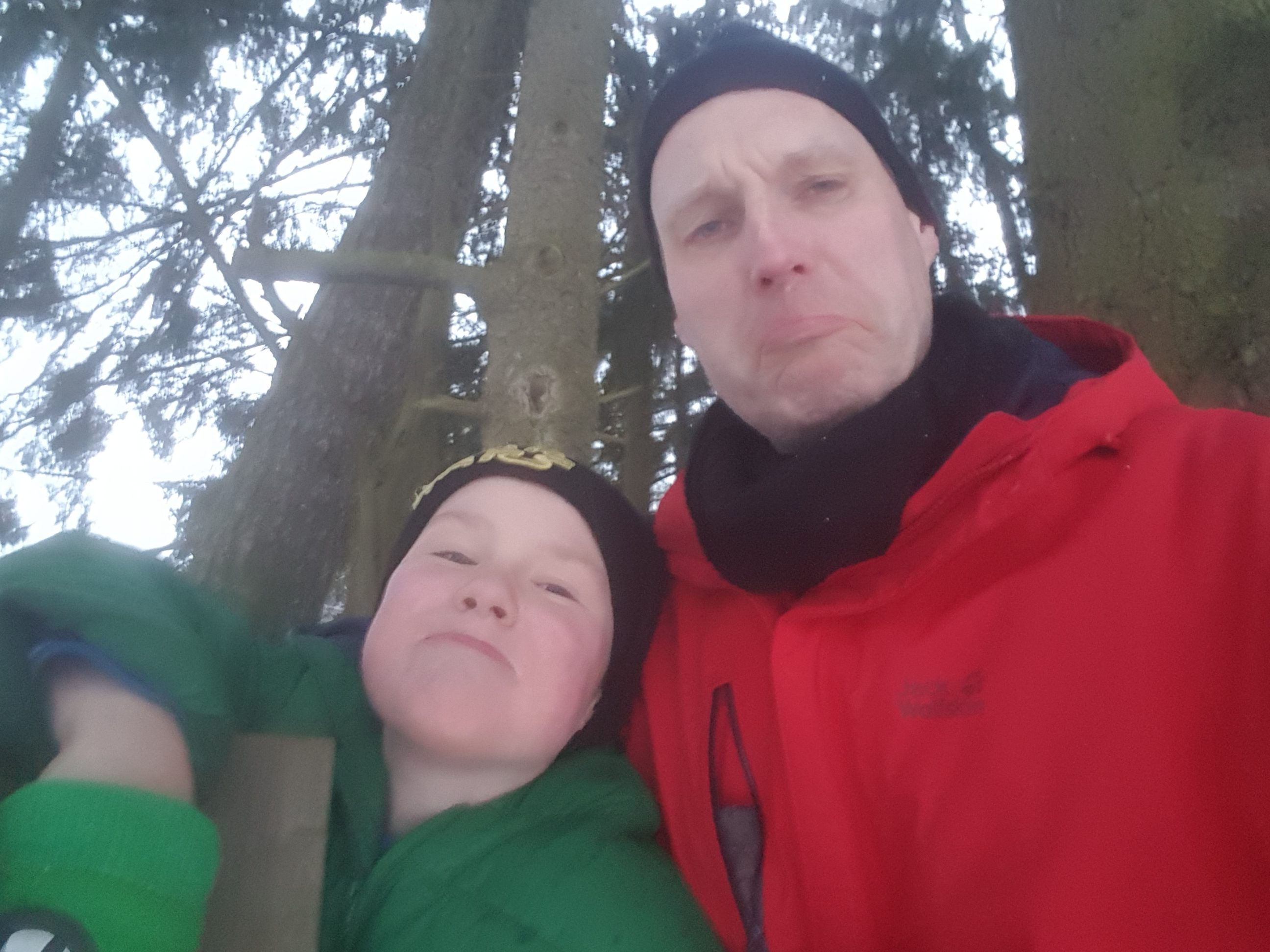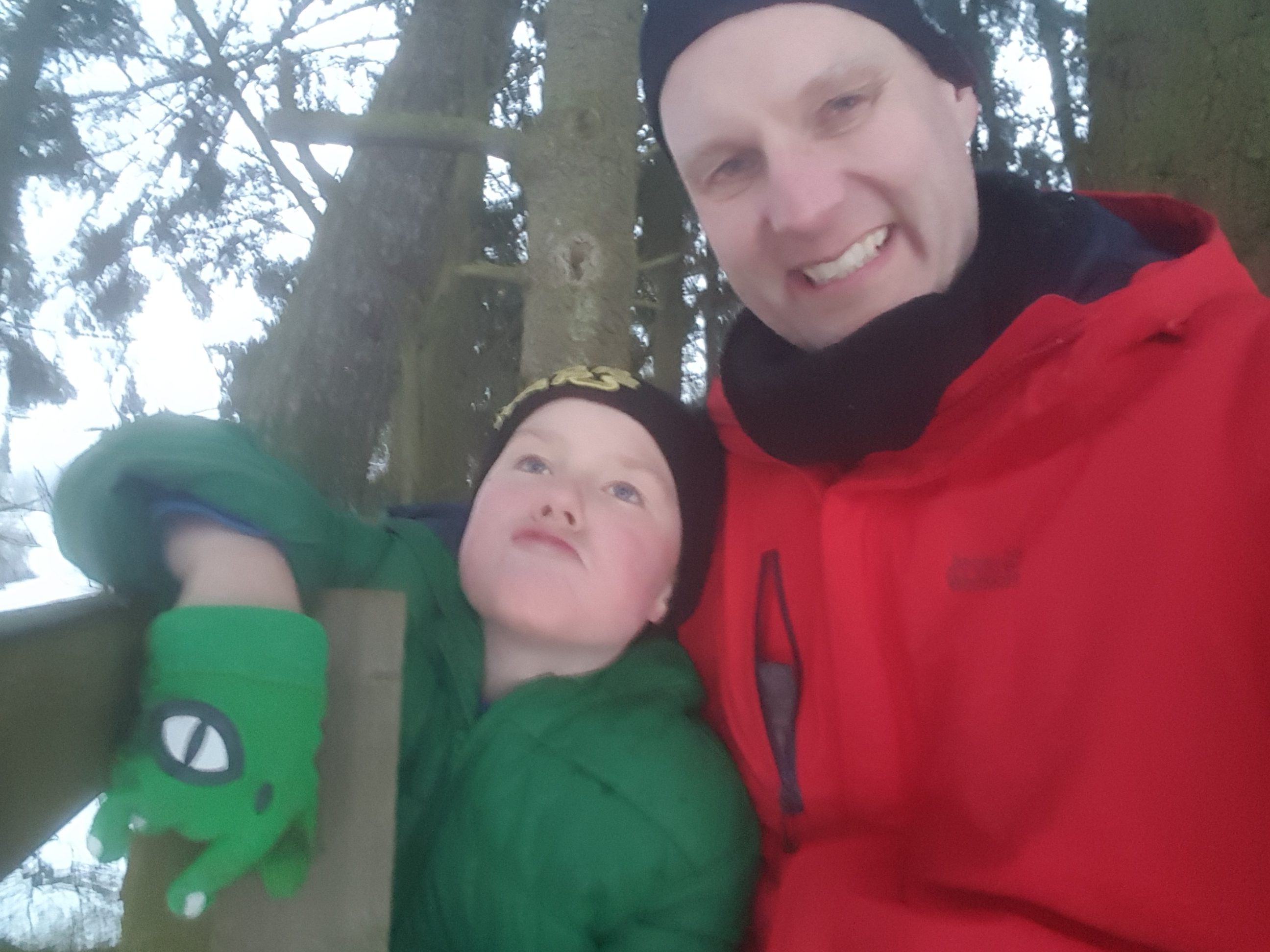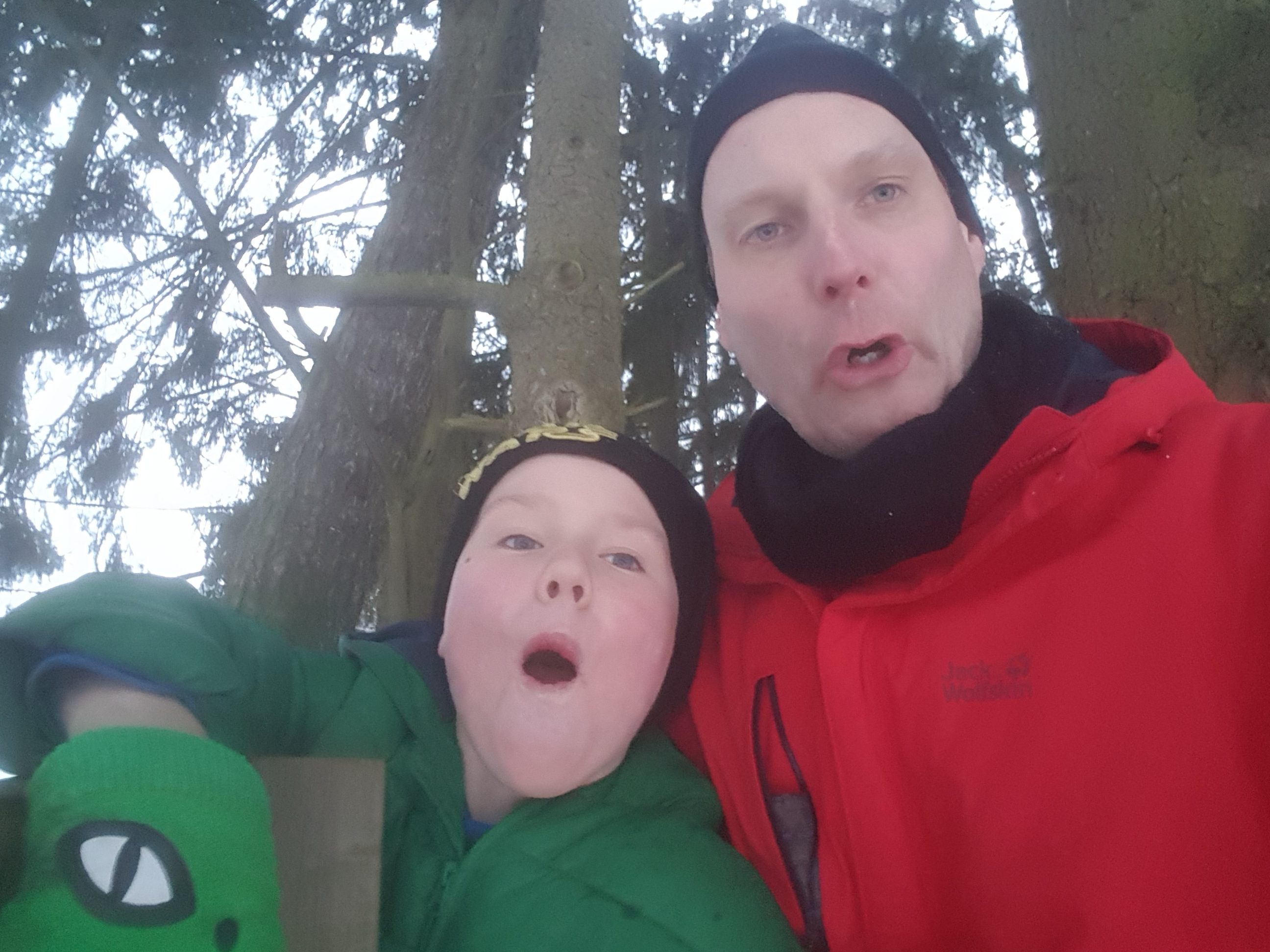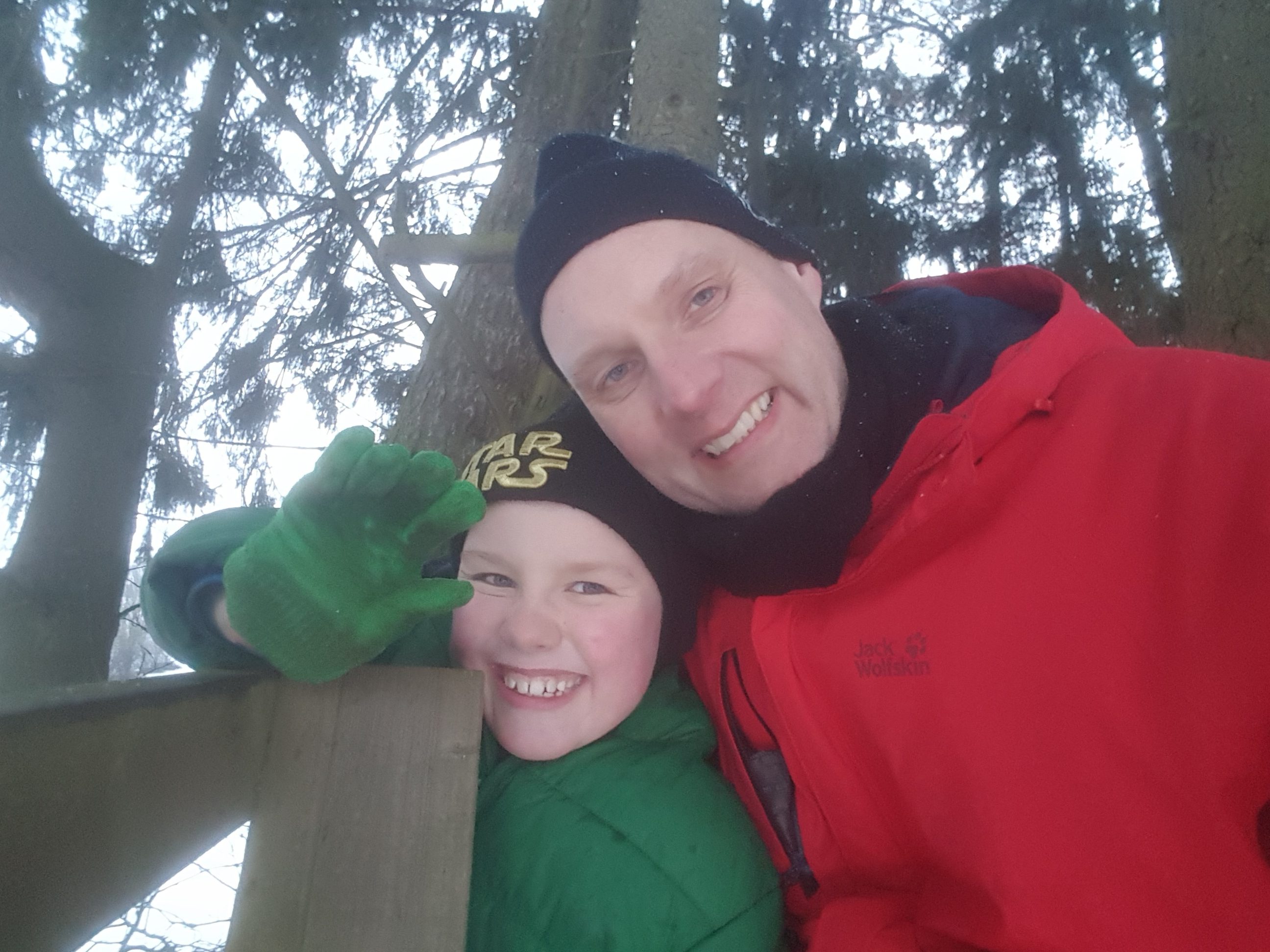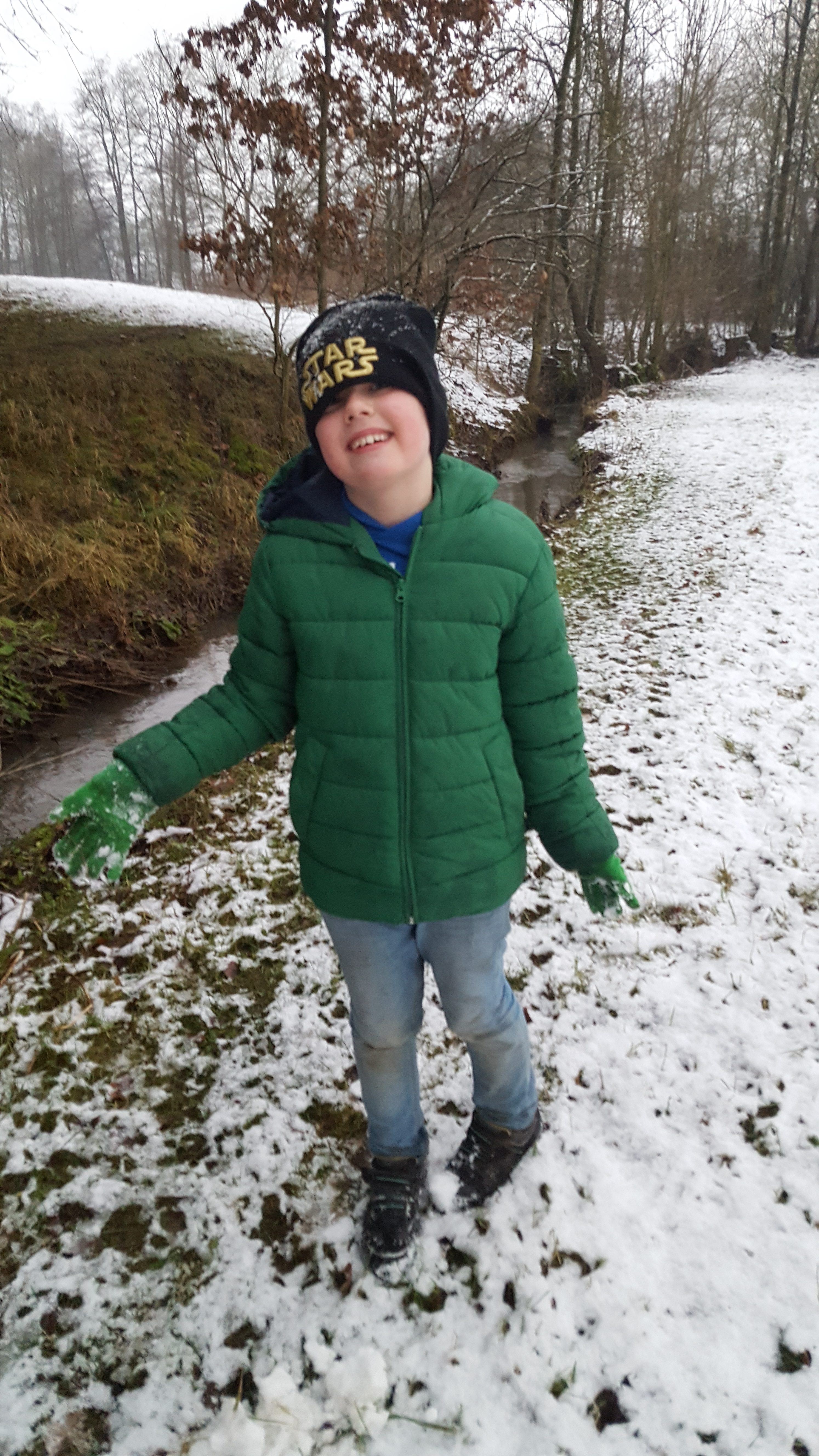Another weekend. And the wind coming from France bringing the the balloon probe launching at Idar-Oberstein in a 150 km range of Stuttgart. The probe is an RS92 which is different from the model launching at Stuttgart (RS41). Over the last week, I had tried successfully to receive and to decode its signal. So we were good to go. Felix and myself decided to take up the challenge.
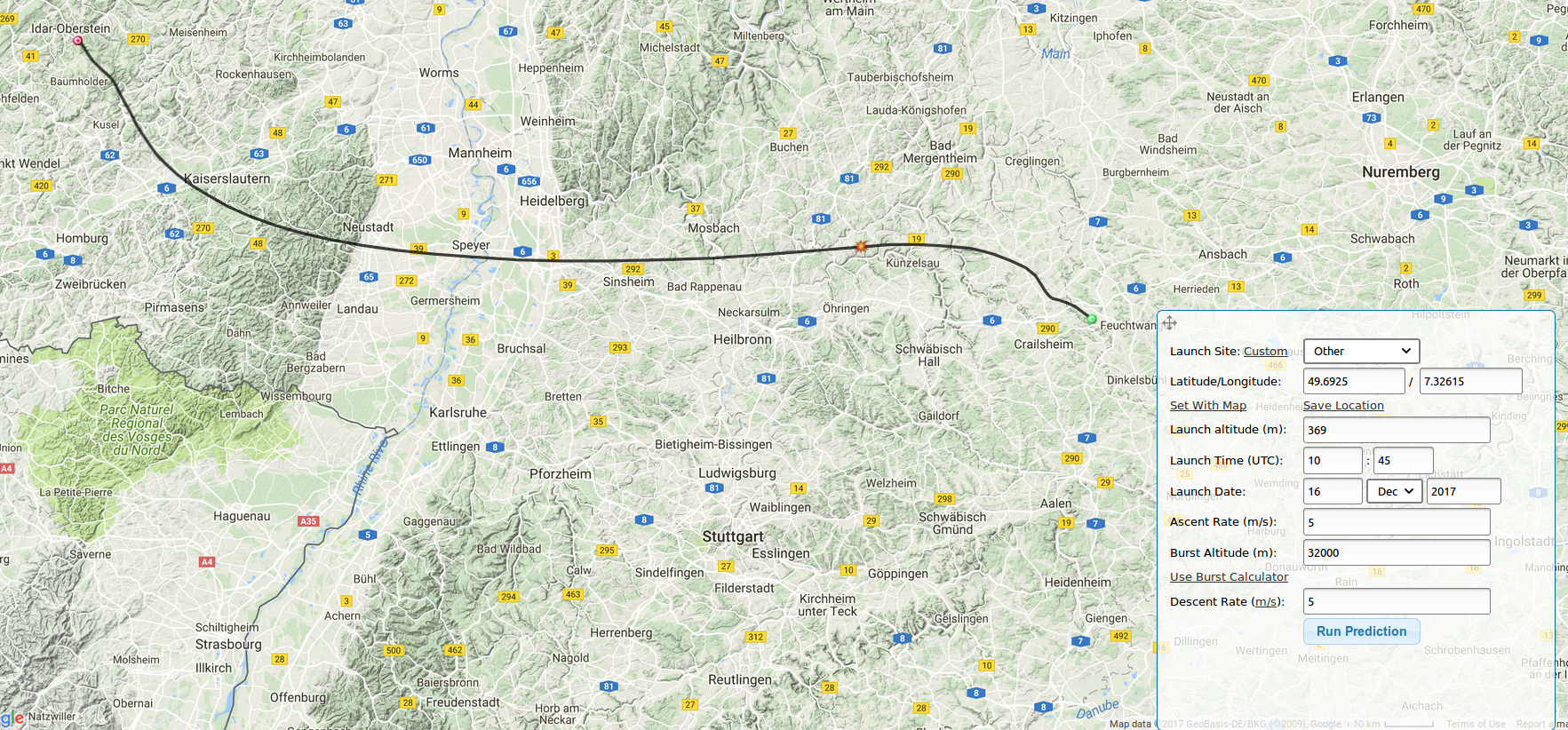
Learning from our last attempt, I assumed a burst altitude of 32km prompting the predictor to suggest a landing site near Feuchtwangen. The timing was excellent this time — Felix acquired the signal of probe while we drove along the autobahn A6. It was still far west from us. Nearing Feuchtwangen, we pulled over into a service area in the vicinity of Crailsheim to wait for the probe to close up with us. The probe climbed and climbed, its balloon finally bursting at 35270 meters. Using the predictor, we realized that the likely landing site was somewhere near Ansbach. We fired up the 911 and flew along the autobahn A6. We then stopped at a resting area at Frankenhöhe, a little hill overlooking the area around Ansbach – just the right place to track the probe as close as possible to the ground. By this time, the balloon had already burst and the probe parachuted down. The last telemetry package placed the probe over Oberdombach near Ansbach in around 580m – 450m = 70 m above the ground. And we were just 10 km away or roughly 15 minutes. In previous attempts we had been further away, and the signal had gradually faded away as the probe came closer to the ground. This time, the signal suddenly disappeared.
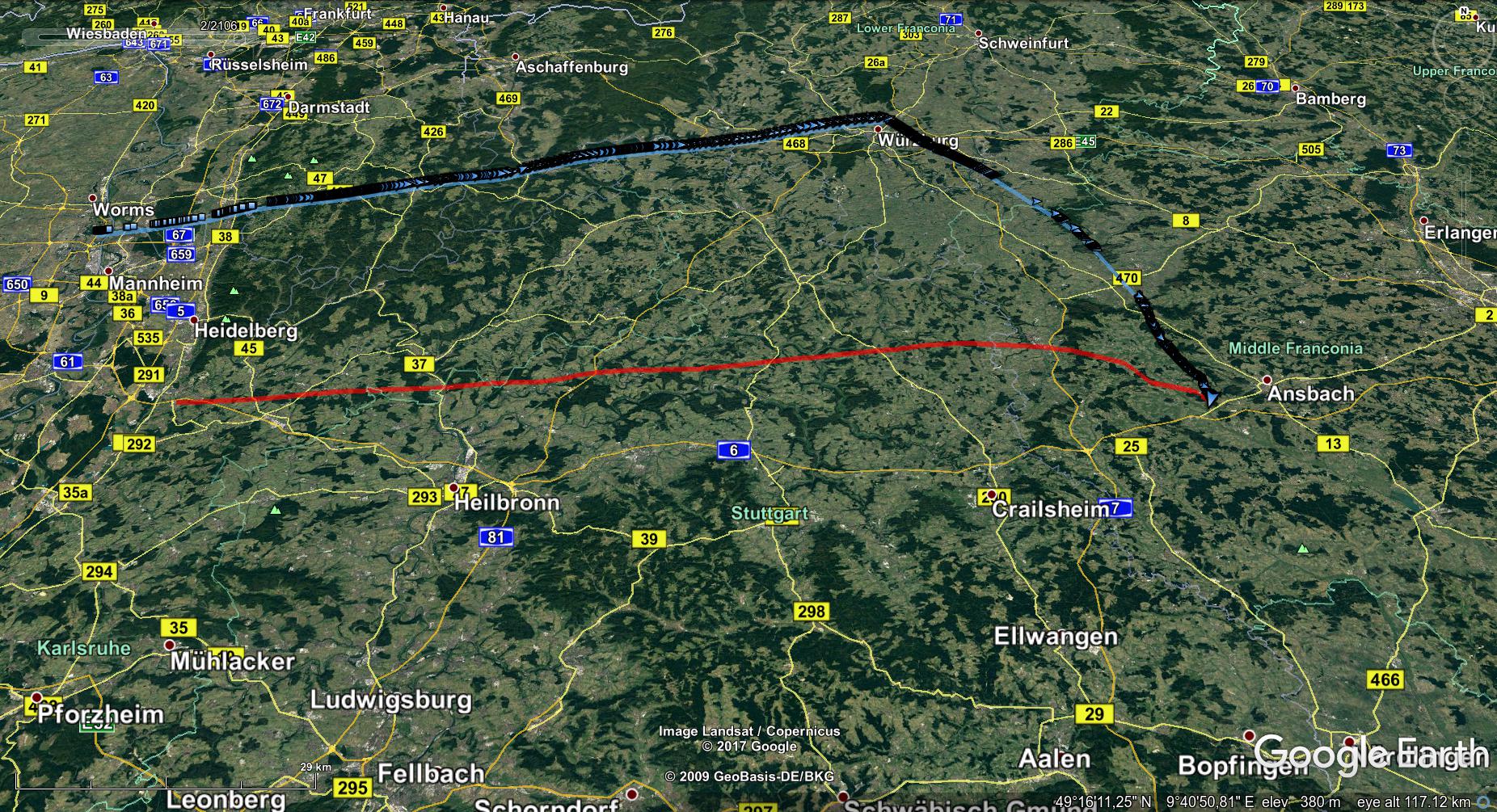
About 1 kilometer from the last decoded position, i.e. at the end of the yellow line in the picture below, I could suddenly see the signal of the probe on the receiver’s spectrogram. We stopped and training the antenna into the direction of the strongest signal, we could even partially decode some data packages.
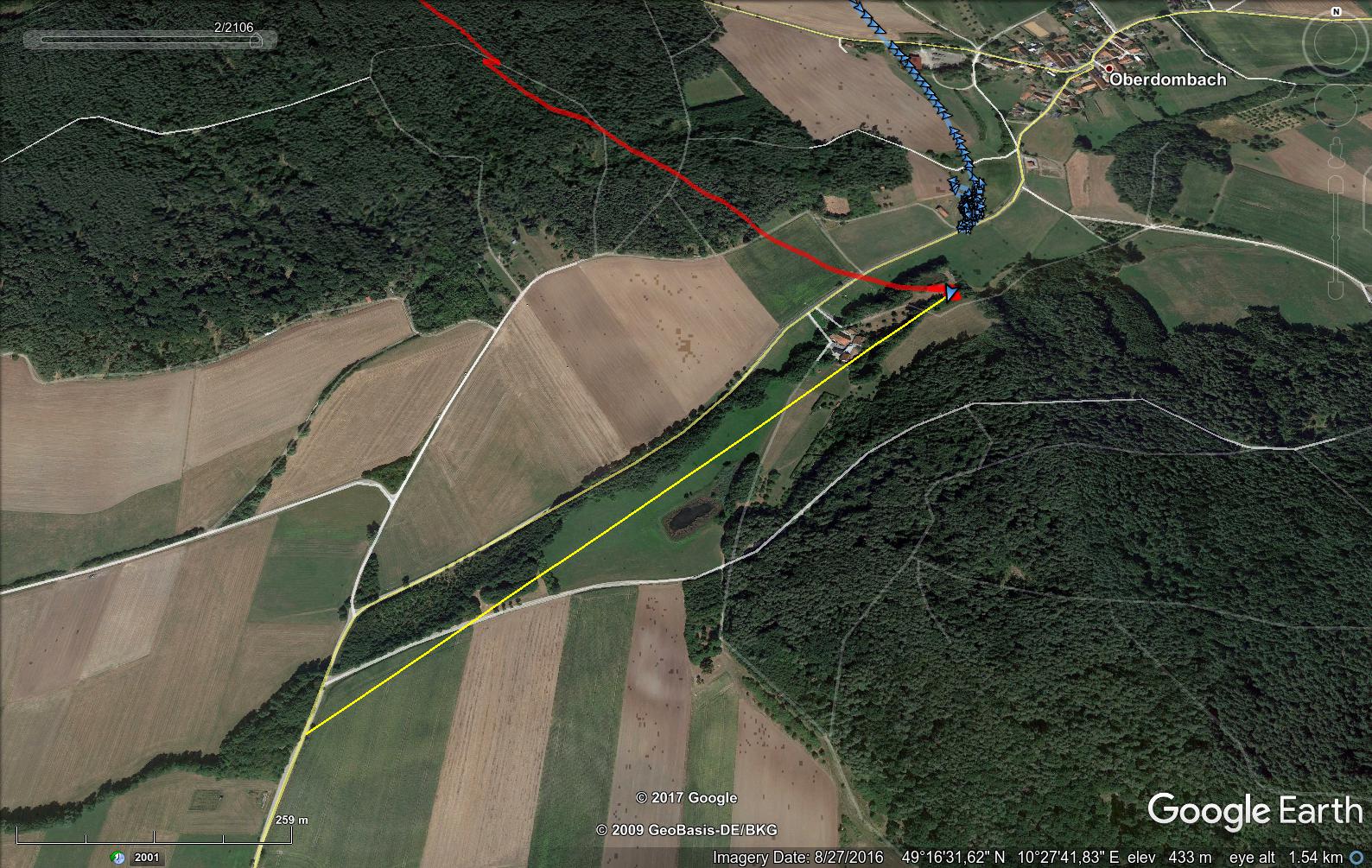
The probe was still up and running! We continued in direction Oberdombach, parked the car, decoded a full telemetry block including the GPS position, and then walked to the received GPS position.
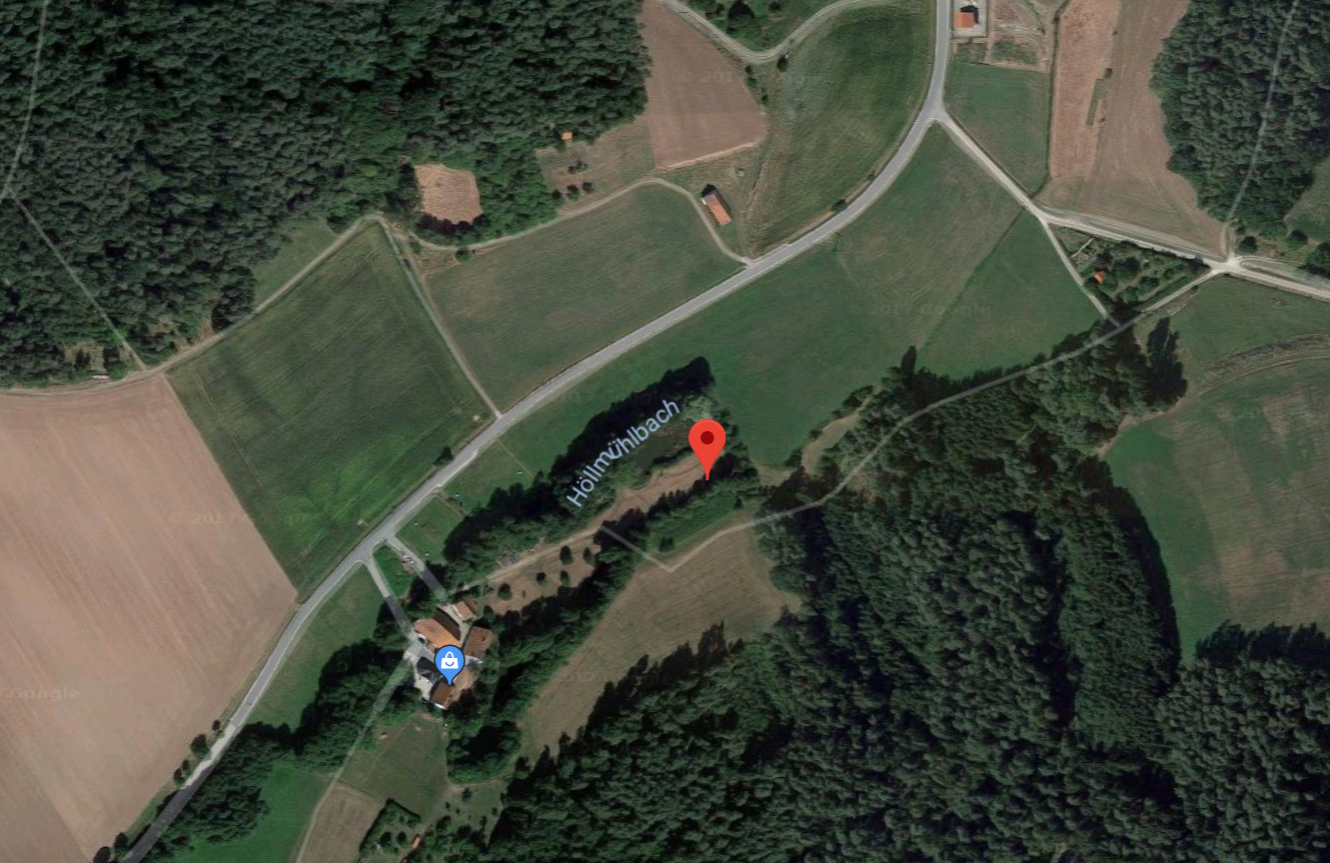
We did not find the probe. Using the directional antennas, we tried to determine the direction of the strongest signal. The signal was however too strong, so regardless in which direction we would stick the antenna, the signal would remain equally powerful. After about 60-90 minutes, the battery ran dry, and the probe ceased to send. We kept on searching, but to no avail. I would think it was in a circle smaller than 100 meter — maybe somewhere in a tree top.
Even though we were unsuccessful in the end, this was a big leap forward — we found the approximate landing site, and we receive the signal of the landed probe. And we had fun looking around, and climbing onto a raised blind right next to the presumable landing site.
